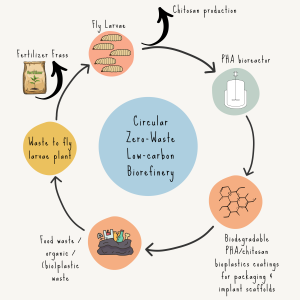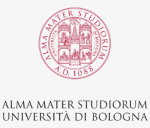


Background, Objectives and the Advantages of BioLaMer Technologies
Global Food Waste Challenge
According to the Food and Agriculture Organization (FAO) of the United Nations, approximately one-third of all food produced for human consumption is lost or wasted globally. This amounts to about 1.3 billion metric tons of food each year.
Regional Disparities: Food waste occurs throughout the entire food supply chain, but the extent varies across regions. In industrialized countries, such as Europe and the United States, consumer waste tends to be higher (food waste). In developing nations, more significant losses occur during production, storage, and transportation stages (food loss).
Environmental Impact & Economic Losses: Food waste has significant environmental consequences. When food decomposes in landfills, it generates methane, a potent greenhouse gas contributing to climate change. Moreover, the resources used to produce wasted food, such as water, land, and energy, are also wasted.
Food waste represents a substantial economic loss. The value of wasted food is estimated at around $1 trillion globally each year. This includes costs associated with production, transportation, storage, and disposal.
Petrochemical Plastics Challenge
The petrochemical plastics problem is a significant environmental challenge with severe consequences. Here are some key points highlighting the severity of the issue:
Overwhelming Production: Petrochemical plastics, which are derived from fossil fuels like petroleum and natural gas, have experienced an exponential increase in production over the past few decades. In 1950, the global plastic production was around 2 million metric tons per year, but by 2019, it had reached approximately 368 million metric tons per year. This rapid production growth has led to a massive accumulation of plastic waste.
Persistence and Accumulation: One of the major concerns with petrochemical plastics is their persistence in the environment. Most plastics do not biodegrade; instead, they break down into smaller microplastics over time. These microplastics can persist in the environment for hundreds of years, accumulating in oceans, waterways, soil, and even in organisms.
Impact on Marine Life: Plastic pollution in oceans poses a severe threat to marine ecosystems. Marine animals, such as seabirds, sea turtles, dolphins, and whales, can ingest plastic or become entangled in it, leading to injury, suffocation, and death. Plastic debris can disrupt marine food chains and ecosystems, with potential long-term consequences for biodiversity.
Land and Air Pollution: Petrochemical plastics also contribute to land and air pollution. Improper disposal and ineffective waste management systems result in plastic litter on land, which can harm terrestrial wildlife and pollute ecosystems. Plastic waste incineration releases harmful pollutants and greenhouse gases into the atmosphere, contributing to air pollution and climate change.
Microplastics in Food Chain: Microplastics have been found in various parts of the food chain, including seafood, drinking water, and agricultural produce. These microplastics can enter the human body through ingestion and inhalation, potentially posing risks to human health. The long-term health effects of microplastic exposure are still being studied.
Recycling Challenges: Although recycling is often seen as a solution, the reality is that petrochemical plastics face numerous recycling challenges. Many types of plastics are not easily recyclable due to complex compositions, lack of infrastructure, and limited market demand for recycled plastics. As a result, a significant portion of plastic waste still ends up in landfills or as litter.
The BioLaMer Solution
BioLaMer aims to demonstrate a novel proof of principle fly larvae biorefinery by establishing food eating black soldier fly larvae (Hermetia illucens) as a high impact feedstock for cost-effective production of two biopolymers, polyhydroxyalkanoates (PHA) and chitosan, and then added-value products from the produced biopolymers.
The advantages of the larvae route are that:
i) the feedstock is renewable and inexpensive; ii) it provides less complexity as the larvae has almost invariable chemical composition;
iii) can be used to mitigate the FW problem;
iv) can reduce crop based feedstocks;
v) doesn’t disturb the biodiversity;
vi) can avoid/reduce pre-treatment costs that are associated with other waste-streams to produce the platform chemicals for biopolymer production; and many more.
BioLaMer Partners










